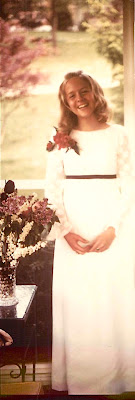 The bound woman, whose body is youthfully graceful, appears to be in distress, pushing against the constraints of her bonds. Her face, in a searching grimace, is worn with sun and time as she gazes into the wide, blue sky above the rooftops of Old Town.
The bound woman, whose body is youthfully graceful, appears to be in distress, pushing against the constraints of her bonds. Her face, in a searching grimace, is worn with sun and time as she gazes into the wide, blue sky above the rooftops of Old Town. What will we do with our bodies when we die? There’s no more room at the Key West Cemetery, that’s for sure. And yet walking among the stones and markers and pictures and quotations, you have to wonder what you’d have written on your monument, were there room here for you. “She Quit Smoking” was the epitaph I thought of for myself for many years, as it was, for a long time, the most difficult achievement of my life. Lately, the most remarkable thing I’ve done is get through cancer. But “She Survived Cancer” would seem silly on a grave. Maybe “She Survived Cancer — For a While.”
I had a childhood friend named Janet. We lived in the same little New England town; our families attended the same church. It was an old church, with a hillside of ancient graves, some of them dating back to the 1600s. We loved wandering through that cemetery, noting dates, babies buried next to their parents, sometimes whole families, fallen victims to some epidemic, born before the age of antibiotics. Heartbreaking. Some stones marked the graves of soldiers who’d fought and died in the American Revolution. Some in the Civil War. Some names we knew, their descendants lived among us. It was a special thing between Janet and me, a way of passing a brilliant autumn or spring day. Then Janet died. I went to her funeral but I am sad to say I don’t know where she is buried. So shocking was her death, at the time the last thing I wanted to imagine was her beautiful young body buried in the earth. But now I wonder where her grave is. I would like to visit it. And yes, place flowers on it. Or a poem.
 |
| Janet's senior prom picture May 11,1968, was also her 18th birthday. |
I think of Janet when I hear Ravel’s "Pavane for a Dead Princess," so sad, and yet hopeful at the same time. I will always think of Janet when I read haiku or see a particularly evocative watercolor painting, because Janet was an artist and a poet, too. But lately I’ve begun to understand why that Key West monument speaks to me so profoundly. In my heart, and in my mind, Janet’s memory is just like that Bound Woman, warming in the sun, alone with the dead and her unfathomable secrets.


Beautiful June, especially thinking about Janet, who was my childhood friend as well. I just read "Middlesex" and Michael's explanation of the statue is brilliant.
ReplyDeleteGiven the body language and the stylized surf at the base of the statue. I suspect that the statue is of Andromeda , who was sentenced to be sacrificed to a sea monster?
ReplyDeleteGiven the body language and the stylized surf at the base of the statue. I suspect that the statue is of Andromeda , who was sentenced to be sacrificed to a sea monster?
ReplyDelete